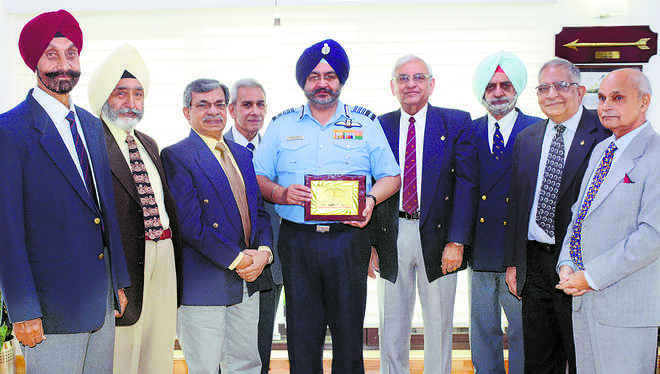PVC recipient Sekhon’s squadron to fly again
Vijay Mohan
Tribune News Service
Chandigarh, November 22
Coinciding with the golden jubilee of the commissioning of IAF’s only Param Vir Chakra recipient, Flying Officer Nirmaljit Singh Sekhon, the Air Headquarters has drawn up plans to revive the squadron that he had served in. The squadron will be re-formed on the indigenously-built Light Combat Aircraft Tejas.
Sekhon’s outfit, No. 18 Squadron, also known as Flying Bullets, had been de-commissioned or “number-plated”, as it is called in Air Force terminology, two years ago after the MiG-27 aircraft that it was equipped with were decommissioned.
(Follow ; and )
“We met Air Chief Marshal BS Dhanoa this week and he told us that the IAF is making sure that Sekhon’s contribution to the nation and the force is never forgotten,” Air Marshal AK Singh, former Air Officer Commanding-in-Chief, Western Air Command, who is Sekhon’s batchmate, said. “The process of revising the war hero’s squadron is part of this endeavour,” he added.
The squadron was formed on April 15, 1965, with Gnat fighter aircraft. It first saw action during the 1971 Indo-Pak war and operated out of Srinagar with the task of defending the Kashmir valley. Sekhon, then just 28 and hailing from Ludhiana, was part of the deployment. On December 14, 1971, Sekhon, along with another officer, scrambled to counter an attack by Pakistan aircraft and shot three enemy Sabre jets in aerial combat. His own aircraft was hit and he went down. For his actions, he was decorated with the highest gallantry award.
After the war, the Gnats were replaced with HAL Ajeet in 1975. In May 1989, when the squadron was at Hindon, it received the MiG-27 and its role changed from air defence to ground attack. It then moved to Kalaikunda in the North-East, where it was awarded the President’s Standards in 2015 before flying into the sunset.
Several of Sekhon’s batchmates from the 97th Pilots’ Course, who were commissioned in June 1967, had met the IAF chief and presented him a plaque dedicated to Sekhon that would be displayed in the Air Force Museum at Palam.
Reviving the squadron, however, could take time as new aircraft are yet to come in. Last year, the IAF had raised its first Tejas unit, No. 45 Squadron, the Flying Daggers, to be based at Salur in Tamil Nadu, but it has just a handful of planes and is not fully operational.









